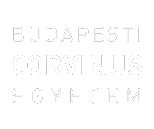Sulyok, Dóra (2020) Hungaroring at the top of motorsports-cooperation, competition and other questions of sport facility management. BA/BSc szakdolgozat, BCE, International Study Programs. Szabadon elérhető változat / Unrestricted version: http://publikaciok.lib.uni-corvinus.hu/publikus/szd/Sulyok_Dora.pdf
|
PDF
- Requires a PDF viewer such as GSview, Xpdf or Adobe Acrobat Reader
770kB |
Szabadon elérhető változat: http://publikaciok.lib.uni-corvinus.hu/publikus/szd/Sulyok_Dora.pdf
Absztrakt (kivonat)
Topic, aim: The topic of my thesis is the motorsport industry, more especially the Formula 1. It focuses on two circuits that are hosting facilities in the mentioned competition series. The main aim is to describe in which aspects Hungaroring faces competition and cooperates with Red Bull Ring. Beside that, I included some other concepts of sport facility management as well, to have a more complete analysis of Hungaroring, as a sport facility. Theoretical background: This chapter provides the background that is necessary for a successful research, that consists of 4 subsections. It begins with the general overview of the sport business, that includes the phenomenon of professionalization and details the business elements in today's sport with the latest trends in the industry. I highlighted some characteristics of the sport business as well, that are especially important for this study: the role of the state and types and characteristics of competition and cooperation. The third subsection is more specific, it details the concept of sport facility management, mentioning the types of facilities, the steps of organizing an event and the opportunities and threats that these facilities face with the emergence of new technologies. The last section of this chapter includes the introduction of the Formula 1 from a theoretical point of view: players of the business, costs, revenues and the impact of the sport on a hosting country’s economy. Problem setting: This chapter serves as an introduction to the actual research. It provides information about the Formula 1 – as a for-profit organization, including its sources of revenues and its costs, its strategy and important numbers regarding the competition series - , and the two circuits (sport facilities) that I included in this study, the Hungaroring in Hungary and the Red Bull Ring in Austria, providing a short overview of their past, their history and their present and the sport events disputed in the sport facilities. In this chapter I presented briefly the five hypotheses I formulated for this study. Methodology: This study combines the qualitative and quantitative research techniques and secondary and primary data for a deeper and more complete analysis. Secondary data include data available on the internet about the attendance of events at the sport facilities, while the primary data were collected via interviews (qualitative research) and two questionnaires (quantitative method). The interviews were conducted with Júlia Gazsi, vice-director of Hungaroring and Ferenc Várhegyi, local commentator of the Formula 1 Grand Prix at Hungaroring. I prepared two questionnaires, one in Hungarian and one in English but the questions were the same for both groups, since the international aspect of the study made it indispensable to ask foreign consumers as well. The questionnaire resulted in being very successful with 1674 respondents altogether. Results: In this section I presented the demographical data and the level of activity of respondents. I would like to highlight that the sample was international, as 64 nations were represented in it. The level of activity of respondents was displayed according to Ágnes Neulinger’s scale and showed, to what extent participants are involved in the sport of Formula 1. Since the questionnaires were published in Formula 1 Facebook groups, it was not surprising, that almost all participants watched the broadcasting of Formula 1 via television at least occasionally. The results of free time activities were high as well, the activities that required financial participation, like buying or visiting a Grand Prix were less popular between participants. Findings: Before the research, I prepared five hypotheses that I tested with the data from the quantitative research and used the qualitative research as insights. The Formula 1 proved to be the most important event at Hungaroring, and it is also clear that a Hungarian driver would have an influence on the Hungarian consumers. It seems that the most important decision factor regarding the Grand Prix visit for all consumer groups is costs, that is bound to the concept of proximity, as costs (travelling, accommodation etc.) grow if a consumer decides to visit a Grand Prix that is far from his/her place of living. But if we look at international consumers, the higher costs in Austria can be decisive between Hungaroring and Red Bull Ring. Although the theoretical background showed the importance of sport tourism, there is no evidence that it is more important in Hungary. Lastly, a possible cooperation between the two circuits can be beneficial, consumers preferred a 2-weekend pass.
| Tétel típus: | BA/BSc szakdolgozat |
|---|---|
| Témakör: | Vállalati vezetés és politika Kultúra, közművelődés, sport |
| Azonosító kód: | 13994 |
| Képzés/szak: | Economist in International Business |
| Elhelyezés dátuma: | 06 Okt 2021 12:07 |
| Utolsó változtatás: | 02 Dec 2021 11:50 |
Csak a repozitórium munkatársainak: tétel módosító lap

